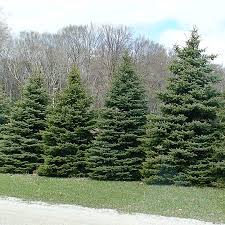TERRESTRIAL PLANTS
Home » TERRESTRIAL PLANTS

Subscribe to our Newsletter
TERRESTRIAL PLANTS: PLANTS LIVING ON LAND
PLANTS OF COLD HILLY AREAS:
· It is very cold in winter in hilly places like Ooty, Kashmir, Darjeeling and the Himalayan ranges including Himachal Pradesh.
· Instead of flowers they have cones and are called conifers. The cones have seeds in them.These trees are called coniferous trees.
· Conifers have needle-like leaves which are very tough and can survive the cold and snow.
· The sloping shape of the trees makes the snow fall off easily.
· E.g. : pine, spruce, cedar (deodar) and fir trees.
· These trees keep their leaves green all throughout the year and so they are called evergreen trees.
· The spruce trees are used as Christmas trees.
PLANTS OF THE PLAINS
· The trees and plants of the plains mostly have many branches and numberless leaves.
· The leaves are renewed periodically.
· Teak, babul, shisham, palash, etc. are some of the common trees of the plains.
PLANTS OF HOT AND DAMP AREAS
· Palm, tamarind, rubber and coconut are some of the trees that grow well in this type of climate.
· Eastern and western sea-coasts of south-India are such regions.
· The trees of such areas are evergreen and they usually have a large number of leaves and they do not shed their leaves in winter.
PLANTS OF MARSHY LAND
· Places that have clayey soil and plenty of water and the water cannot drain away so it collects in the soil.
· Mangrove trees grow in such marshy places or swamps.
· Roots of the plants in marshy lands have breathing roots that grow above the ground to take in the air they need instead of under the soil. Such roots are called aerial or breathing roots.
· Carnivorous plants like Venus fly trap plant is a marshy land plant.
PLANTS OF THE GRASS FAMILY
· Some common varieties of plants that belong to the grass-family are rice, wheat, jowar, bajra, sugarcane, bamboo etc..
· The plants of this family provide food for us and animals.
PLANTS IN DESERTS
· Plants like cactus of many kinds have roots that are spread far under the surface of the soil.
· They can quickly catch even the smallest amount of water.
· Desert plants normally have small leaves.
· The leaves of cactus are like sharp spines. This prevents loss of water from the leaves.
· The cactus plant stores food and water in its thick and fleshy stems covered with thorns. When there is no rain the cactus uses the water in its stem.
· Cactus has flowers too.
· The mesquite bush has roots that go down 20 meters in search of water.
BOOKS
We have our e-books published on Amazon for Grade 3 and Grade 4. The books serve as an important guide for Science Olympiads organized by SOF, Silverzone, Unified Council and others. Books are designed to help students understand key science concepts.
The key highlights of the book are:
· Well explained topics
· Use of diagrams and images for
students to visualize
· Test exercise after each chapter for self-assessment and evaluation
· Interesting facts sections spread across the book
Here are the links:





